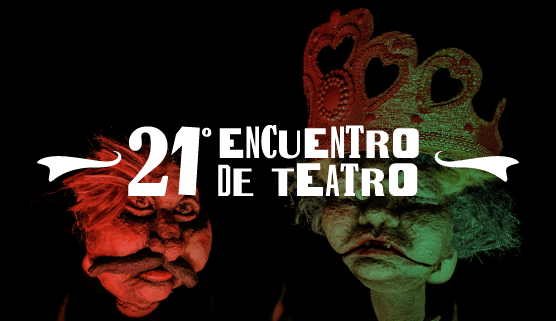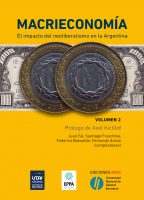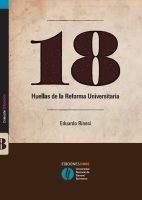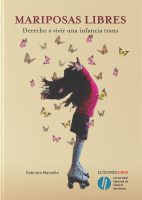Interpretacion de la locura y acciones concretas en el Hospital Jose A. Esteves, de Lomas de Zamora (1908-1971)
The aim of this thesis is to analyze the ways to interpret and act on psychiatric disorders in hospitals in the province of Buenos Aires, in the process of the incorporation and consolidation of psychiatry as a medical discipline in Latin America and especially in Argentina, during the twentieth century. For addressing this problem, this thesis focuses its analysis in a psychiatric hospital institution in particular, the Hospital J. A Esteves from Lomas de Zamora (institution for women that was an annex of the Hospital Nacional de Alienadas until the 1940s), two diseases especially dementia praecox and schizophrenia, and a group of actors: doctors who worked in that institution and an entire population of female patients who were hospitalized until their death in hospital. The study was developed between 1908, the year of foundation of that hospital and 1971, at the ending of Pilot Project of Therapeutic Communities developed in the institution. Specifically, it seeks to explain the relationship between the understandings of madness and the variety of diagnoses and treatments used by doctors to address it.
For the development of this problem, the research is based on the dialectic and interactive relationship between the context for possibilities of performance of psychiatrists scheduled by the circulation of readings, translations and local productions and psychiatric clinical work. In this context we consider the view of psychiatrists was permeated by a social and cultural environment that modified their professional performance. We can call this dialectic and interactive relationship as "clinical eye", working hypothesis that allows us to articulate different aspects of what life was like in the Esteves Hospital: medical practices, theories that were held and some clues about the life of the people who inhabited the institution. In this way, the "clinical eye" was a point of arrival of the research. Regarding the key players in this research, patients once hospitalized, underwent a process of chronicity until their final death, and only a limited number of them received any treatment, which did not allowed to cure. When it comes to psychiatrists, we don’t intend to find a unique look on the set of physicians dedicated to mental health because psychiatry was and is a disciplinary field composed of a variety of positions, theories and explanations, that are also binding with criteria of institutional type that change over time. The context in which doctors developed their work was the hospital. Therefore, another objective is to analyze the itinerary of the institution and the impact of that course on clinical criteria. In this context, we take into account the influences of the State and those entities or institutions that at different times dealt with the course of the hospital, such as the Public Welfare of the Capital Federal.
For the reconstruction and interpretation of the process by which psychiatrists interpreted madness and did there practice, we specifically chose to analyze dementia praecox and schizophrenia, which were paradigmatic psychosis diagnoses in psychiatry of the last century. From these nosologies, we try to reconstruct and interpret practices of physicians, by putting into dialogue of clinical work and its theoretical counterpart.
We believe that the most appropriate approach to the clinic in the field of psychiatry is based on the diagnoses to patients. From the above arguments, the sources chosen to address our problem of the study were the medical records of dead patients of Esteves Hospital, in the time span we investigated, and medical articles by authors working in the Argentine psychiatric field. Medical records are a place of registration where you can view how the work of physicians was configured, and interpret the impact that caused the hospitalization and psychiatric practices in the behavior of patients. We focus on two aspects that are present in the medical records: diagnosis and therapy. For diagnostics, we surveyed all those who are registered, and we focus on the case study –demencia praecox and schizophrenia-. The objective of recovering the treatments that were performed in the hospital lies in trying to understand how we proceeded to mental disorders in the hospital institution, particularly in the Esteves, and what theoretical and conceptual formulations appeared on in the medical articles. The medical gaze, we believe, can also be seen in the way of describing the treatments.
The diagnoses and treatments were written in records, whose garment demonstrates the interaction between psychiatrist and documents and theoretical principles that permanently altered their notions about the pathologies and protocol designs to address them. All this information was addressed by the psychiatrist through reading and discussion of specific scientific articles to which they accessed through European texts, study trips to various countries of the old continent and in local productions of their colleagues in medical journals that catered in psychiatric issues. Therefore, this thesis takes these latest scientific productions mentioned as sources, and analyzes them taking into account: local doctors used foreign interpretations to develop their research concepts. Also, these principles were retrofitted with high plasticity to clinical needs and theoretical intentions were presented, regardless of origin. Besides, these productions varied by time of use and the type of pathology that they meant. With regard to dementia praecox and schizophrenia, it was tied to European technical description; in these cases they made an effort to fit the clinical cases, in these logics produced across the sea.







